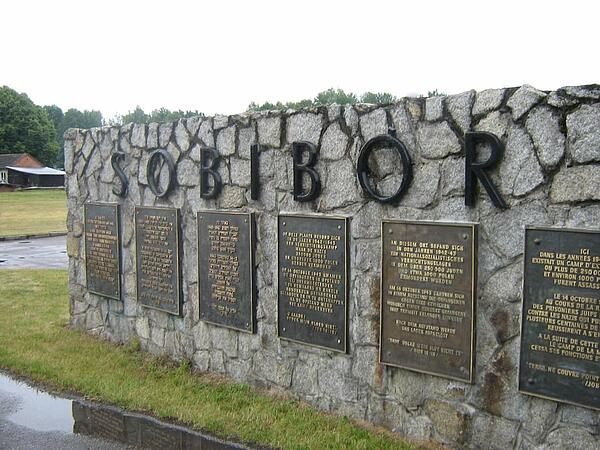Sobibor
Sobibor death camp was created as part of Action Reinhard – the Nazi’s campaign to annihilate the European Jewish population. Sobibor was just one of many death camps built in Poland, others included Belzec, Treblinka and Majdanek. Operational from March 1942, Sobibor was the only one of the Nazi camps that saw a major breakout from the prisoners being held there. It was closed down in October 1943 after 18 months use.
The death camp was located in remote woodland near the small village of Sobibor. It was created as part of the Nazi party’s plans to rid Europe of all Jews, with this particular death camp to focus on killing the Jews that were in the nearby Polish city Lublin as well as Chelm. As was common for camps like this, Sobibor was situated by a railway which enabled prisoners - Jews and Russian POWs - to be transported to the camp. Sobibor was much smaller than many of the Nazi death camps; it was only 1,300 feet by 2,000 feet in size.

When prisoners arrived at the camp they would be taken straight to the death camps to make the killings as quick and efficient as possible. Indeed, it is estimated that in the first two months in which the camp was fully operational - May and June 1942 - around 100,000 Jews were gassed to death. It took only around three hours from arriving at the camp before the prisoners were dead. To allow for even more killings the decision was taken that summer to add a further three gas chambers at the site, although this was all put on hold while railway works were carried out. The camp was in operation again after all this work had been completed by October 1942.
Despite being the smallest of the Nazi death camps based in Poland, a huge number of people were murdered at Sobibor. It is reported that in total there were 260,000 people killed during its 18 months in use.
However, it was not just the scale and efficiency of the killings at this death camp that have meant it has been the subject of so much attention. It is also significant because Sobibor was the only such camp to experience a mass breakout by its prisoners. This took place on 14 October 1943, when the inmates murdered two SS guards - the prisoners then took the officers’ weapons and made a break for it. Around 300 of the prisoners had to climb over barbed wire fences and then run across fields covered in landmines so they could escape into the neighbouring forest. Only 50 of those 300 who tried to escape actually got away.
Sobibor was closed in the immediate aftermath of the event. The Nazis made the decision to demolish the site and plant trees over it instead to cover up the atrocities that had taken place there.
MLA Citation/Reference
"Sobibor". HistoryLearning.com. 2026. Web.
